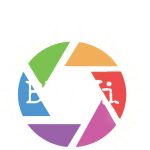The film industry has witnessed a significant shift in recent years, with a growing number of women behind the camera and in key creative roles. This has led to a rise in female-centered narratives that provide fresh, diverse perspectives and explore experiences that have often been marginalized. In 2025, women in film are not just telling stories; they are redefining what stories are told and how they’re told.
The Rise of Women-Centered Films: Breaking Away from Traditional Tropes
Historically, women in film were often relegated to supporting roles, with their stories centered around male protagonists. However, in recent years, women in film have become the driving force behind narratives that focus on women’s experiences. This is a trend that has seen an explosion in mainstream cinema, as well as in independent films.
In 2025, the narrative landscape is filled with films that offer diverse depictions of women, from their struggles and triumphs to their everyday lives. Films like “Little Women” (2019), “Promising Young Woman” (2020), and “The Invisible Woman” (2021) represent a move toward more complex and layered female characters. These films are pushing beyond traditional roles and exploring what it means to be a woman in today’s world, from topics of empowerment, survival, and sisterhood to the struggles of being a woman of color, a mother, or an older woman in a youth-dominated industry.
Female Directors Breaking New Ground
One of the most exciting aspects of this transformation is the role of female directors in telling these stories. Directors like Greta Gerwig, Chloé Zhao, and Emerald Fennell are creating films that put women’s experiences at the forefront of storytelling. Gerwig’s Little Women reimagines a classic novel through a modern lens, Zhao’s Nomadland explores the lives of working-class women, and Fennell’s Promising Young Woman combines dark humor with a critique of sexual assault culture.
These directors are making waves not just because they’re women but because they’re reshaping cinematic conventions. They are moving away from stereotypical portrayals of women, creating stories that reflect the complexities and nuances of real life.
The Importance of Representation for Women in Film
One of the key reasons this shift is so important is the growing demand for representation in the industry. Women of all backgrounds — whether they are women of color, queer women, disabled women, or older women — want to see themselves reflected in the stories on screen. The rise of films by and about women is a direct response to this demand, and it’s also a call for greater inclusivity in all aspects of filmmaking, from writing and directing to casting and crew.
Having women in key creative roles — from directing to producing to writing — allows for a more authentic portrayal of women’s lives. This representation is crucial not just for women but for society at large. Films have the power to challenge stereotypes, break down barriers, and reshape public perception. When women take control of their own narratives, they can tell stories that highlight their experiences, aspirations, and struggles in a way that resonates deeply with audiences.
The Rise of Female-Centered Storytelling Platforms
In addition to mainstream films, there’s been a rise in platforms that are dedicated to telling women’s stories. Streaming platforms like Netflix, Hulu, and Amazon Prime Video have increasingly focused on producing original content with women at the center. Netflix has been at the forefront with hit shows like “The Queen’s Gambit” (2020), “Bridgerton” (2020), and “The Crown” (2016), all of which feature strong female characters at the heart of their narratives.
These platforms not only allow for more diversity in terms of the women depicted on screen but also provide opportunities for female writers, directors, and producers to bring their stories to life without the limitations often imposed by traditional Hollywood systems. Independent production companies and filmmakers are also using these platforms to create and distribute content that might otherwise struggle to find a home in the traditional film industry.
Women in Film Are Changing the Narrative: What’s Next?
The future of women in film is incredibly promising. As the industry continues to evolve, the opportunities for women filmmakers to tell their own stories and control the narratives they present will continue to grow. This doesn’t just mean more female-centered films, but more inclusive and varied representations of women in cinema.
As audiences demand more diverse, realistic portrayals of women’s lives, the industry will need to keep up. This means hiring more female directors, writers, producers, cinematographers, and crew members across all levels of production. It also means supporting women’s voices both in front of and behind the camera and encouraging more female-driven production companies to take the reins.
Films created by and for women will continue to reshape the industry and the way stories are told. As more women rise to positions of power within the industry, we can expect to see even more groundbreaking films that challenge the status quo, celebrate women’s diverse experiences, and leave a lasting impact on the global cinematic landscape.
